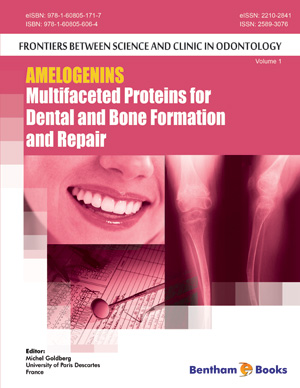Abstract
For decades, the amelogenins which comprise 90% of the developing extracellular enamel matrix proteins were known to be exclusively expressed in ectodermal enamel and play a major role in its structural organization and biomineralization. In more recent years other roles for amelogenin have been discovered. This manuscript focuses on amelogenins possible roles during regeneration of tooth supporting tissues, in normal long bone, and during development of the embryonic craniofacial complex; A single recombinant human amelogenin protein (rHAM+), induced in-vivo regeneration of all tooth-supporting (periodontal) tissues after creation of experimental periodontitis. Amelogenin recruited (directly or indirectly) mesenchymal stem cells during periodontal regeneration. Amelogenin beads applied on developing embryonic mesenchyme and tooth germ recruited mesenchymal cells. Amelogenin was expressed in normal and regenerating alveolar bone cells (osteocytes, osteoblasts and osteoclasts), periodontal ligament, cementum and bone marrow stromal cells. Amelogenin was also expressed in long bone, periosteum, articular cartilage and differentially in ephyphysial growth plate cells. Amelogenin expression was highest in areas of high bone turnover and remodeling in normal and regenerating tissues. Spatio-temporal expression of amelogenin during embryonic craniofacial development is dynamic. These results and accumulating reports suggest that amelogenin participates in regulation of some developmental processes, acts as a signaling molecule affecting both normal and regenerating tissues, and is involved in maintaining the balance between bone formation and resorption. The pattern of amelogenin expression and the induction of periodontal regeneration, possibly offer future treatment to some widespread periodontal, bone, ligament and joint diseases, which are of major clinical, scientific and financial challenges.
Keywords: Amelogenin, Periodontal Regeneration, Long Bone, Soft Tissues, Alveolar Bone, Recruitment, Mesenchymal Stem Cells, Craniofacial Embryonic Development






















